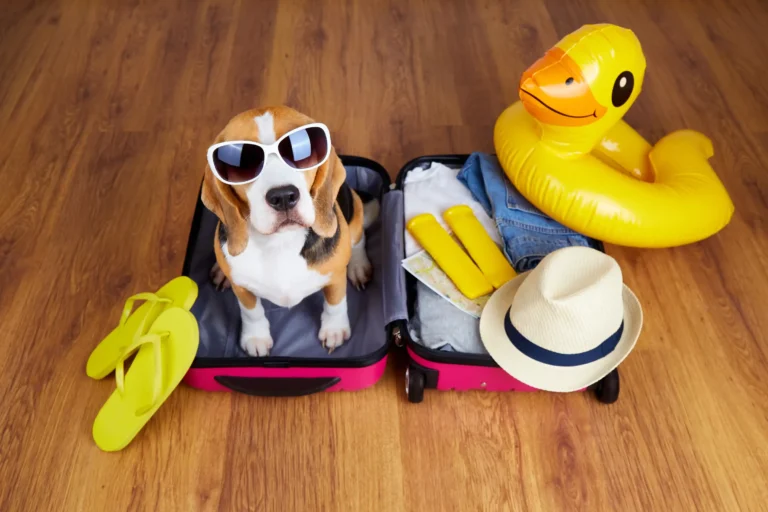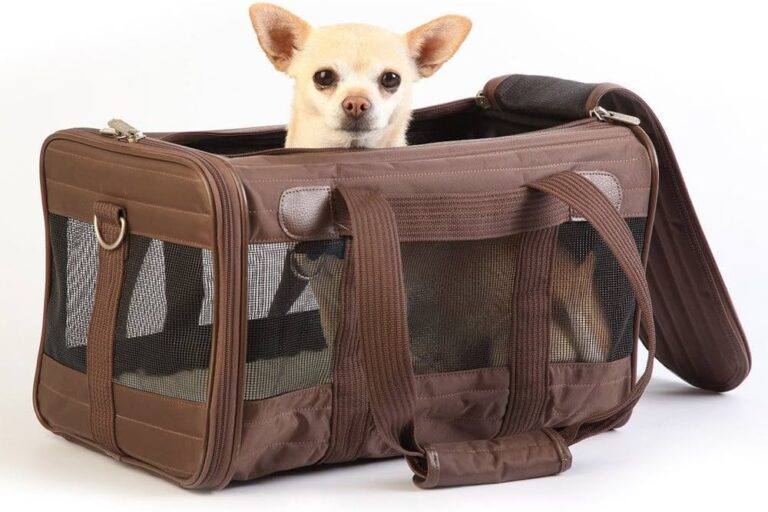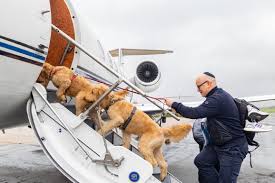Setting off on international escapades with your furry friend in tow? Have a petite pooch that’s a seasoned traveler or perhaps embarking on their first globetrotting adventure? Navigating the realm of international travel with small breeds can be a challenging undertaking, but it’s not an impossible feat. In the ensuing paragraphs, you’ll find valuable insights and top tips to ensure a hassle-free, enjoyable journey with your tiny sidekick.
One of the primary concerns for pet parents is the pet-friendliness of their chosen travel destination. We’ll walk you through the process of selecting destinations that are not only welcoming of your little companion but also offer a wealth of exciting activities for both of you.
Understanding the various international travel regulations for pets is crucial for a smooth journey. From documentation and health checks to quarantine policies, we’ll provide a comprehensive overview of what to anticipate and how to be prepared.
Traveling with small breeds isn’t solely about ticking off administrative boxes; it’s also about ensuring their comfort and well-being throughout the journey. We will delve into the practical aspects of travel, providing tips on choosing pet-friendly accommodations, managing feeding schedules, and handling travel-induced stress in your furry friend.
Finally, we’ll round off with some key advice on how to make the most of your international adventures with your tiny sidekick. Whether it’s exploring new terrains or tasting exotic foods, we’ve got you covered. This isn’t just about surviving the journey; it’s about creating unforgettable memories with your furry best friend, one destination at a time. So, fasten your seatbelts and get ready to jet-set with your petite pal!
Understanding the Specific Needs of Small Breeds
Small dog breeds are unique in their specific needs compared to their larger counterparts. Their diminutive size and often delicate constitutions demand a careful and considered approach to their care. When it comes to international travel, understanding the needs of your small furry friend is essential.

Health Concerns for Small Breeds
Small dogs are known to be more prone to certain health issues, such as dental problems and respiratory conditions. Traveling can exacerbate these issues, so it’s important to ensure your dog is in optimal health before embarking on a trip. Regular vet check-ups and maintaining a consistent healthcare routine are crucial.
Nutritional Needs
Small dogs have higher metabolic rates, which mean they burn off energy quickly. Hence, they require more frequent meals in smaller portions. Traveling can disrupt their feeding schedule, so it’s necessary to plan ahead to meet their nutritional needs during the trip.
Travel Preparation
Preparation is key when it comes to traveling with your small breed dog. This involves taking steps to ensure the journey is as smooth and stress-free as possible for your pet.
Securing the Right Carrier
A carrier is essential for travel, both for safety and comfort. It should be well-ventilated, secure, and spacious enough for your dog to sit, stand, turn around, and lie down comfortably. For air travel, it’s important to ensure that the carrier is airline approved.
Packing Essentials
When packing for your trip, don’t forget to include your dog’s essentials. This includes food, water, a leash, a blanket or bedding, a favorite toy, waste bags, and any necessary medication.
During the Journey
Traveling can be a challenging experience for small dogs, especially when they are introduced to unfamiliar environments, noises, and routines. However, with careful planning and proactive strategies, you can significantly minimize your pet’s discomfort and stress levels, ensuring a more pleasant experience for both of you.
Minimizing Stress
One of the best ways to minimize travel stress for your small dog is to acclimate them to their travel carrier well before the trip begins. Place the carrier in your home and allow your dog to explore it freely. Encourage them with treats and toys so they associate the carrier with positive experiences. Gradually increase the amount of time your dog spends inside the carrier, starting with short sessions and building up to longer periods.
Additionally, dogs are very attuned to their owners’ emotions. If you are nervous or stressed, your dog is likely to pick up on these feelings and become anxious as well. Maintaining a calm, positive demeanor can help reassure your pet that everything is fine. Speaking in a soothing voice and offering gentle strokes can also help to comfort your dog during the journey.
Familiarity is key to reducing anxiety. Bringing along your dog’s favorite toy, blanket, or even an article of your clothing with your scent can create a sense of security and normalcy in an otherwise unfamiliar environment.
Maintaining Hydration and Nutrition
Keeping your dog well-hydrated is crucial during any trip. Dehydration can quickly set in, especially during long journeys or in warm weather. Always carry a portable water bottle and a collapsible bowl to offer water at regular intervals.

Feeding routines should also be maintained as closely as possible. If you anticipate a long journey, it is advisable to feed your dog a few hours before departure to allow for digestion and bathroom breaks. Avoid heavy meals just before traveling, especially if your dog is prone to motion sickness.
Pack enough of your dog’s regular food for the entire trip, plus a little extra in case of delays. Sudden changes in diet can lead to gastrointestinal upset, so it is best to stick with what your dog is accustomed to eating.
Air Travel with Small Breeds
Flying with a small dog can present unique challenges, but it can be managed effectively with the right preparation. Understanding and complying with the airline’s pet policies is essential for a smooth experience.
Airline Policies
Each airline has its own specific regulations regarding pet travel. Before booking your flight, thoroughly research your chosen airline’s pet policy. Key factors to consider include whether the airline allows pets in the cabin, size and weight restrictions, carrier requirements, associated fees, and documentation requirements such as health certificates or vaccination records.
Some airlines limit the number of pets allowed in the cabin per flight, so early booking is recommended. Confirming all details with the airline well in advance of your travel date helps to prevent last-minute surprises.
Preparing for Take-off
Helping your dog expend excess energy before the flight can make a significant difference in their comfort during travel. Take your dog for a long walk or an extended play session before heading to the airport. Physical activity can help tire them out, making it more likely that they will rest during the flight.
Avoid feeding your dog a full meal within a couple of hours before the flight to minimize the risk of nausea and vomiting. Offer water sparingly before boarding to prevent accidents while in the carrier.
When checking in, ensure that your dog’s carrier meets all airline specifications and that your dog is securely and comfortably settled inside. Label the carrier with your contact information and your destination address in case of an emergency.
In-Flight Comfort
During the flight, keep your dog’s carrier under the seat in front of you, as required by most airlines. Resist the temptation to open the carrier during the flight, even if your dog seems restless. Instead, reassure them with soft words and gentle touches through the mesh openings if possible.
Use a familiar blanket or a piece of clothing inside the carrier to provide comfort. For longer flights, bring along a few favorite treats or a chew toy to help occupy your dog and reduce anxiety.
Arriving at the Destination
Once you arrive at your destination, your dog will need some time to adjust to the new surroundings. This period of transition is important for their comfort and mental well-being.
Establishing Routine
Dogs thrive on routine, and maintaining a familiar schedule can ease the transition to a new environment. Try to stick to your dog’s usual feeding, walking, and sleeping schedule as closely as possible. Consistency provides a sense of stability and predictability, which can be very comforting for a small dog in unfamiliar surroundings.
If possible, set up a small area in your accommodations that mimics your dog’s usual sleeping area at home. Include their bed, toys, and blankets to create a sense of familiarity.
Exploring New Surroundings
Give your dog ample opportunity to explore their new environment at their own pace. Begin by walking them on a leash around the immediate area, allowing them to sniff and become accustomed to the new sights, sounds, and smells. Always supervise your dog closely, especially during the first few days, and ensure they are safely secured on a leash when outdoors.
Take note of any local hazards, such as traffic patterns, wildlife, or unfamiliar plants that could be harmful. Being vigilant will help keep your dog safe as they adjust to the new surroundings.
Introducing your dog gradually to new experiences and giving them plenty of positive reinforcement can help build their confidence. Reward calm behavior with treats, praise, and affection.
Coping with Jet Lag and Time Changes
If your international travels involve crossing multiple time zones, your small dog may experience symptoms similar to jet lag. Changes in time zones can disrupt sleeping and eating patterns. Help your dog adjust by gradually shifting their schedule a few days before departure if possible.
Once at your destination, expose your dog to natural light during the day and maintain active periods to help regulate their internal clock. Avoid letting them nap excessively during daylight hours, as this can prolong adjustment to the new time zone.
Managing Travel-Related Stress
Travel can bring about stress for even the most well-adjusted dogs. Recognizing the signs of stress early on is critical. Symptoms may include excessive panting, whining, pacing, loss of appetite, or gastrointestinal upset.
Provide your dog with a quiet, secure space where they can retreat if they feel overwhelmed. Familiar routines, calming pheromone sprays, and plenty of affection can help soothe an anxious dog. In severe cases, consult a local veterinarian for advice or consider natural calming supplements.
Conclusion
In conclusion, traveling internationally with small breed dogs can be an incredibly rewarding experience, bringing joy, adventure, and a deeper bond between you and your furry friend. However, it requires careful planning, thorough preparation, and a strong understanding of your pet’s unique needs to ensure that the journey is as smooth and stress-free as possible.
From selecting the right travel carrier that prioritizes both safety and comfort to packing essentials like food, water, toys, and familiar comfort items, every detail plays an important role in your dog’s overall travel experience. Small breeds, with their delicate physiques and high energy levels, particularly benefit from having a consistent and thoughtful routine during travel. Paying close attention to their feeding schedule, hydration needs, and comfort will help mitigate the challenges associated with long-distance journeys.
Consulting with your veterinarian before traveling is critical. A thorough health check ensures your small dog is fit for travel and up to date on all vaccinations. Your vet can also provide helpful advice on managing travel-related anxiety and recommend preventive measures against parasites or illnesses that may be more common at your destination.
Understanding and complying with airline pet travel policies is another essential aspect of preparation. Each airline has its specific regulations regarding carrier dimensions, in-cabin pet allowances, health documentation, and fees. Being familiar with these requirements beforehand helps avoid stressful surprises and ensures a seamless airport experience.
Traveling to a new place with your tiny companion opens up opportunities for shared adventures, unique experiences, and a lifetime of treasured memories. Exploring scenic parks, strolling through bustling markets, or simply enjoying a café terrace together in a foreign land adds an enriching layer to both your life and your dog’s experiences. Always remember that patience, attentiveness, and flexibility are key as your dog adapts to unfamiliar surroundings.
By following these tips and preparing thoughtfully, you can turn each trip into an extraordinary journey, filled with excitement, comfort, and shared joy. So, jet-setters with tiny sidekicks, it is time to embrace the world with open arms and wagging tails. Here’s to many happy adventures ahead with your small breed companion. Safe travels and unforgettable moments await you both! 🌍🐾



